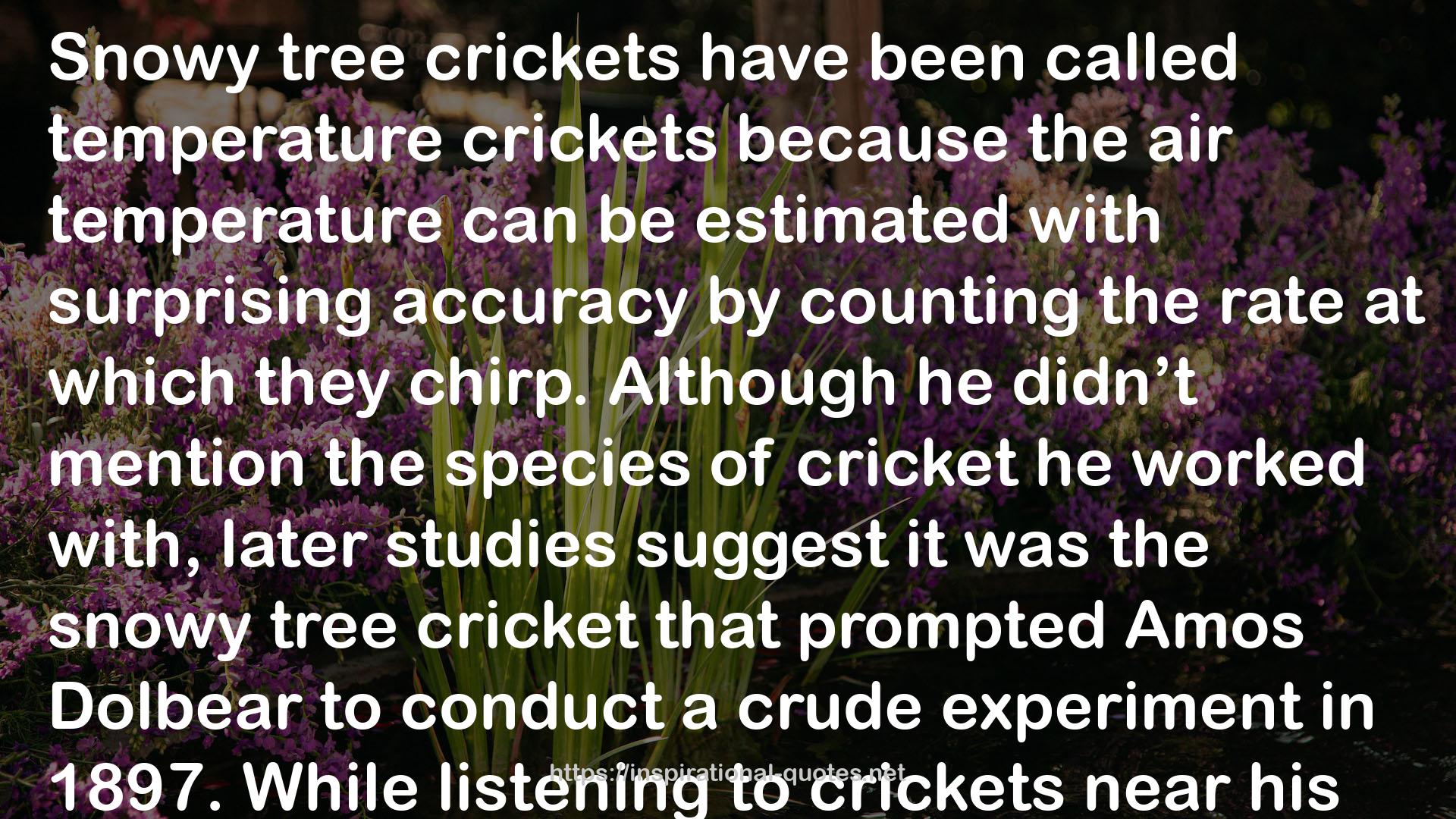" Snowy tree crickets have been called temperature crickets because the air temperature can be estimated with surprising accuracy by counting the rate at which they chirp. Although he didn’t mention the species of cricket he worked with, later studies suggest it was the snowy tree cricket that prompted Amos Dolbear to conduct a crude experiment in 1897. While listening to crickets near his home, Dolbear noted that at 60 degrees Fahrenheit, snowy tree crickets made 80 chirps per minute, at 70 degrees they chirped 120 times per minute, and at 50 degrees, they only chirped 40 times per minute. These measurements allowed Dolbear to establish the following relationship: temperature F = 40 + N, where N is the number of chirps per 15 seconds (Dolbear 1897). "
― Douglas W. Tallamy , The Nature of Oaks: The Rich Ecology of Our Most Essential Native Trees
